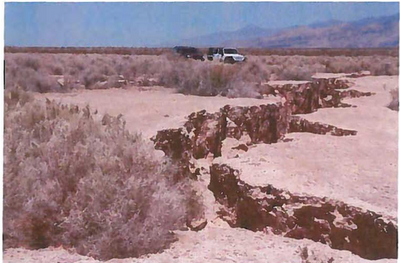Of all nature's wonders that capture our attention, it's easy to take our soil for granted. But a new study reaffirms the importants of cryptobiotic soil crusts. As the study explains, "organisms fuse with soil particles, stabilizing desert crusts and forming fragile peaks in the soil that influence a variety of processes to allocate important resources." KCET published a great article on these crusts and explaining the important functions they play in desert ecosystems. These layers take many years to form, and are very fragile. As we disturb and destroy desert soils, we are turning back the clock on an ecological fabric that could take decades to repair itself. The dark striations on the soil in the center area of the photo is a patch of cryptobiotic crust in the Ivanpah Valley, where First Solar plans to build its Silver State South solar power project.




